final group project report-4G (1).pdf PDF

| Title | final group project report-4G (1).pdf |
|---|---|
| Author | Kasun wijerathna |
| Pages | 105 |
| File Size | 3.8 MB |
| File Type | |
| Total Downloads | 347 |
| Total Views | 713 |
Summary
University of Colombo EN3907 – Group Project Report On Wildlife Tourism in Yala National Park Submitted To: Department of Zoology and Environmental science Faculty of Science Submitted By: All the students of Business and Environment Theme Four year General Degree program i DECLARATION We confirm th...
Description
University of Colombo EN3907 – Group Project Report On
Wildlife Tourism in Yala National Park Submitted To: Department of Zoology and Environmental science Faculty of Science
Submitted By: All the students of Business and Environment Theme Four year General Degree program
i
DECLARATION
We confirm that this dissertation submitted as a partial fulfillment of the degree of Bachelor of Science, represents our own work and is expressed in our own words. External contribution to the work is acknowledged at the point of their use. A full list of the reference employed has been included. None of the material used in the dissertation violates copyright laws.
We endorse the declaration by the candidate.
……………………………..
………………………………..
Dr. Nirmalie Pallawatta
Prof. WipulaYapa
Coordinator Business & Environment program
Head of the department of zoology & Environmental Sciences
i
ACKNOWLEDGEMENTS
We gratefully acknowledge many people in their unstinting support and cooperation during this Group project. We owe a deep debt of gratitude to our supervisor and Dr. P.K.T.N.S Pallewatta (Senior Lecturer, coordinator of Business and Environment Theme Degree program, Department of Zoology and Environment Science, University of Sri Colombo, Sri Lanka) for her advice, encouragement, guidance & help throughout the course of study. We would also thank Prof. W.B.Yapa (Head of the Dept. of Zoology and Environment, University of Colombo, Sri Lanka) for his advice, help and assistance given in various ways. Our special thanks go to the Department of Wild Life Conservation (DWC), Sri Lanka, for their permissions which gave us to succeed field studies in Yala National Park guidance & accommodation facilities. We would also thank to Mr. Siyasinghe who is the park warder of the Yala National Park, for their support given to me by providing information of Ruhunu Yala National Park and his guidance. Our heartful thanks to Dr. Sumith Pilapitiya, former Director General of DWC Sri Lanka, for his friendship and especially for valuable information and useful discussions regarding our research work. Special thanks go to Dr. Prithiviraj Fernando for support given to us by providing research data and guidance. We would like to thank to tour guides in the park for providing their support to surveys. We wish to thank the Directors and Naturalists of Jetwing Yala Hotel, Cinnamon wild Yala and Kulu Safari for providing their ideas and tourism related information required to our group project during our field studies. We wish to express our gratitude & many thanks to my parents for their continued love, support, encouragement & understanding throughout our studies which kept us going. Last but not least, we thank all those who offered considerable assistance and support during our group project.
ii
TABLE OF CONTENTS
Chapter
Title
Page
Declaration ………………………………………….……………………………. i Acknowledgement……………………………………………………………....... ii Table of content .……………………………………………………….................iii List of Figures ………… ………………………………….…………………….. vi List of Tables……………………………………………………………………. vii Abbreviations ………………………………………………….…….………… viii Abstract ....…………………………………………………….….……………… x 01
Introduction………………………………………………………………............. 1 1.1: Background…………………………………………………………........ 1 1.2: Objectives………………………………………………………………. 5
02
Literature Review………………………………………………………………... 6 2.1: Yala National Park……………………………………………………... 6 2.1.1: History ……………………………………………………….. 6 2.1.2: Location and Extent …………………………………………... 6 2.1.3: Physical Characters …………………………………………… 8 2.1.3.1: Geology …………………………………………….. 8 2.1.3.2: Climate ……………………………………………... 8 2.1.3.3: Hydrology ………………………………………...... 9 2.1.4: Habitat types …………………………………………………. 10 2.1.5: Wildlife ………………………………………………………. 13 2.2: Tourism in Yala National Park ………………………………………… 16 2.2.1 Types of Tourism in YNP ……………………………………. 16 2.3: Stakeholders …………………………………………………………… 19 2.3.1: Government Organizations ………………………………….. 19 2.3.2: Private Sector ………………………………………………... 20 2.3.3: Non-Governmental Organizations (NGOs) …………………. 21 2.3.4: Media ……………………………………………………….. 22
03
Methodology …………………………………………………………………… 24
04
Results …………………………………………………………………………. 4.1: Personal and trip characteristics …………………………………….... 4.2: Satisfaction with conditions and experiences ……………………….. 4.2.1: Satisfaction with the overall experience ……………………. 4.2.2: Satisfaction with specific conditions and experiences ………
26 26 29 29 29
4.3 Observation …………………………………………….……………… 32 iii
4.3.1: Government Stakeholders …………………………............. 4.3.1.1: Issues related to tourism activities in YNP………. 4.3.1.2: issues that are identified in the Action Plan …….. 4.3.1.3: Issues that are not directly related to the Tourism in YNP …………………………………. 4.3.2: Privet Sector ………………………………………………. 4.3.2.1: Hoteliers ………………………………………….. 4.3.2.2: Tour Operators ………………………………........ 4.3.2.3: Jeep driver’s Association ………………………… 4.3.2.4: National level privet sector interested in nature Conservation ……………………………………… 4.3.2.5: Camp site Operators ……………………………… 05
32 32 33 33 34 34 38 38 39 39
Discussion ………………………………………………………………........... 40 5.1: Survey Results ……………………………………………………... 40 5.1.1: Personal and trip characteristics of respondent .................. 40 5.1.1.1: Yala as a place to observe the Sri Lankan Leopard …………………………………………... 40 5.1.1.2: Yala as a place to observe other wild life ……….. 43 5.1.2: Satisfaction with conditions and experiences ……………... 45 5.2: Role of government as a stakeholder …………………………… 47 5.2.1: Role of DWC………………………………………………. 5.2.2: Role of forest Department………………………………….. 5.2.3: Role of SLTDA…………………………………………….. 5.2.4: Coast conservation de …………………………………....... 5.2.5: The role of CEA ……………………………………….…... 5.3: Role of the privet sector …………………………………….…….. 5.3.1: hoteliers……………………………………….…………. 5.3.2: Tour operators …………………………….…………….. 5.3.3: Jeep driver’s Association ……………….……………….
47 53 54 54 55 55 55 56 56
5.4 The role of NGOs and media ………………………….…….……... 58 5.5 Local community................................................................................. . 58 06
Recommendations…………………………………………………………….... . 62 6.1: Direct recommendations ………………………………………..…….. 62 6.2: Indirect recommendations …………………………………...………… 64 Conclusion ………………………………………………………………….. 65 References ………………………………………………………………….. 66 Appendix …………………………………………………………………… 68 Appendix 01- Yala NP Block 1…………….…….……………………… 68
iv
Appendix 02- The details of the field workshop and its major activities…69 Appendix 03- Questionnaire for foreign and local visitors……..……….. 72 Appendix 04- Action plan……………………………………………….. 78 Appendix 05- Questionnaire for tour guides ……………………………. 93
v
LIST OF FIGURES
Figure 2.1 2.2 2.3 2.4 2.5 2.6 2.7 2.8 2.9 2.10 2.11 2.12 4.1 4.2 4.3 4.4 4.5 4.6 4.7 4.8 4.9 4.10 4.11 4.12 4.13
Title Current map of YNP Google Satellite view of the coastal line of YNP Rocky outcrop in Block III of YNP Dominant vegetation Pattern of Block III of YNP Dominant vegetation Pattern of Block V of YNP Image of Wild boar Image of Stripe necked mongoose Image of Elephant Image of Leopard Image of Spotted Deers Image of Lizard species Comparison of recent visitors data in YNP Purpose of the local visitors visit to Block I Purpose of the foreign visitors visit to Block I Wildlife sightings by visitors on YNP Block I Previous visits to YNP by local visitors Overall experience at YNP Block I Speeding and reckless behavior of safari jeep drivers Overcrowding of vehicles at animal sightings Foreign visitor’s recommendation for others to visit YNP Local visitor’s recommendation for others to visit YNP The regrowth of the typical arid zone vegetation within the Kulu safari property Outside image of a Kulu safari’s tent Inside of a Kulu safari’s tent A Crocodile tunnel at the edge of the Kulu Safari property (Crocodile conservation project)
vi
Page 7 10 11 12 13 15 15 15 15 15 15 17 27 28 28 29 30 31 31 32 32 37 37 38 39
LIST OF TABLES
Table 2.1 2.2 2.3 5.1 6.1 6.2
Description Major habitat types in the YNP Wildlife diversity and their habitats in the YNP Revenue from Visitors Visiting the Wild Life Parks in SL, 2016 Some important Short-term, Medium-term & Long-term actions in the Action Plan List of Direct recommendations List of indirect recommendations
vii
Page 11 13-14 18 51-53 65-66 67
LIST OF ABBREVIATIONS
Term
Short Form DWC NP YNP WNPS WWCT SLWCS CEA LTTE FFPO
Department of wildlife conservation National park Yala National Park Wildlife and Nature Protection Society Wilderness & Wildlife Conservation Trust Sri Lanka Wildlife Conservation Society Central Environmental Authority Liberation Tigers of Tamil Eelam Flora and fauna protection ordinance
viii
ix
ABSTRACT
Tourism is the third largest revenue from the foreign exchange to the Sri Lanka which contributes a substantial percentage towards the GDP. It is well known for its high level of biodiversity and wildlife and also declared as the 25thbiodiversity hotspot of the world forming a single biodiversity hotspot along with the Western Ghats of India. The biodiversity is largely protected through a set of protected areas that are largely managed under the Department of Wildlife Conservation and Forest Department. Most of wildlifebased tourism activities lie on above protected areas, certain National Parks such as Yala, Minneriya, Udawalawe and Horton Plains etc. As a result of the high diversity and ease of the observing wildlife within short period of time, some of these sites receive very high numbers of tourist. The problem of this over visitation leads exceed the carrying capacity of these sites and it causes to reduce the tourism value of these sites while adversely affect to the environment. Therefore, it is important to practice the sustainable tourism, as country faces many challengers in maintaining tourism as a major source of income in the near and far away future. Under EN 3906 – “Group Project” course that offered by Business and Environment Theme four Degree program it has conducted a project based on the issues of wildlife tourism in Yala National Park, with the objectives of investigating the major factor affecting and stake holders of wild life based tourism in the park, investigating the interaction between wildlife conservation and tourism and highlight the areas of conflicts and making recommendations to achieve wild life conservation of Yala National park at the sometime fulfilling tourism targets. The primary information gathering activity for this project was a field workshop of five days from 23rd- 27th August 2017, at Yala NP. Prior to the field workshop that literature surveys were carried out on Yala NP and its problems. The major data gathering activity was the administration of a questionnaire survey to visitors both local and foreign at the Pathanangala viewing site. Then visitor survey was done for 22 foreign visitors and 18 local visitors and foreigners were more preferred to answered questioners than locals. As well as there were several interviews with DWC officers, jeep drivers and hoteliers. Some secondary information was gathered from published technical documents, and news articles both electronic and printed etc. Finally, all collected primary and secondary information x
statistically analyzed and a set of direct and indirect recommendations is given at the end of the discussion. According to the questionnaire survey results, the most popular purpose of local visitors to visit Yala NP is to observe nature/scenery (23%), to see elephants (17%), to see wildlife (15%) and for enjoyment (15%) and most popular purpose of foreign visitors to visit Yala National park is to see leopards in addition other frequent purposes were to see wildlife and to see elephants. Most frequent sightings of the day of the survey by the visitors were deer/buffaloes and crocodiles. Overall satisfaction of visitors at Yala Block I was extremely high (87%) here both excellent and good have been taken as satisfied. Almost no respondent were dissatisfied (5%). Majority of respondents were satisfied with the speed and behavior of jeeps and few respondents were not satisfied with the speed and behavior of jeeps.
xi
Chapter 01 Introduction 1.1 Background of tourism in Sri Lanka Tourism is the third largest revenue from the foreign exchange to the country which contributes a substantial percentage towards the GDP. (Sri Lanka Tourism Strategic Plan (TSP), 20172020) Therefore Tourism industry is a key player in the Sri Lankan economy. After the end of the long civil war in Sri Lanka, tourist arrivals has been increasing remarkably The Tourism Strategic Plan (TSP 2020) of the Government of Sri Lanka has defined a framework and an agenda to economic footprint of tourism through the sustainable use of its resources. Sri Lanka is receiving a lot of global attention as a tourism location. More recently, “Lonely Planet”, a leading travel and tourism information source has rated Sri Lanka as the “#1 destination in the world” to visit and in 2015-Forbes magazine ranked the island among the “top ten coolest countries” to visit. (TSP-2017-2020) Tourism industry generates a large number of job opportunities to local community, various hotels have given jobs to our local youth and so have helped to solve employment problem to a great extent. Since tourism is a labor intensive industry its improving income distribution through creating numerous employment opportunities. In addition that tourism contributes to growth of service sector as larger number of business engaged in service sector such as airlines, hotels, transportation, recreation and other supplementary services. Also tourism can provides an economic incentive for a place to preserve conservation and provide upkeep in their urban and wildlife areas. Apart from the cultural and archaeological places, Sri Lanka has another importance. That is as one of Sri Lanka is well known for its high level of biodiversity and wildlife. It is declared as the 25thbiodiversity hotspot of the world forming a single biodiversity hotspot along with the Western Ghats of India. The biodiversity is largely protected through a set of protected areas. These are largely managed under the Department of Wildlife Conservation (DWC) and Forest Department (FD), where an area of over 1,710,000 hectares accounting for 26.5% of the land area of the country
1
is legally protected. There are other agencies that protect sites such as the Central Environmental Authority, but they are very small land areas in comparison to the DWC and FD. Their mission is to conserve wildlife and nature by the sustainable utilization of resources through proper management, research and low enforcement and ensure protection of biodiversity and forest cover.(www.dir.ca.gov/dwc) Most of nature-based tourism activities lie on well-known destinations such as certain National Parks (NPs) and forest reserves. As identified by the DWC Sri Lanka has currently 26 National Parks, which account for approximately 13 % of the land area of the entire country. Nearly 55% of the total forest area of the country is managed by the Forest Department and these forests are declared in to several categories under the Forest Ordinance and National Heritage Wilderness Areas Act.(www.forestdept.gov.lk/web) As a result of the high diversity and ease of the observing wildlife within short period of time, some of these sites receive very high numbers of tourist. Out of these 26 national parks there are 4 main national parks that are highly popular among visitors. This has resulted in them being overcrowded. There are Yala NP, Minneriya NP, Udawalawe NP and Horton Plains NP. The problem of this over visitation due to marketing and rapid blooming of tourism industry in Sri Lanka that leads exceed the carrying capacity of these sites. This cause to reduce the tourism value of these sites while adversely affect to the environment. In addition it’s affecting the natural behavior of wildlife. Therefore, it is important to practice sustainable tourism, as country faces many challengers in maintaining tourism as a major source of income in the near and far away future. As Sri Lanka is a signatory to many UN Conventions to protect its natural environment and for sustainable development. The Sustainable Development Goals (SDGs) identifies tourism as a tool for sustainable development and indicators for measuring progress under three SDGs. These goals are, Goal 8- (promote sustained, include and sustainable economic growth, full and productive employment and decent work for all) include tourism contributes a significant proportion of total GDP and in growth rate, and proportion of jobs in sustainable tourism industries out of total tourism jobs, Goal 12 (ensure sustainable consumption and production patterns) deals with the number of sustainable tourism strategies and implemented action plans with related monitoring tools, and Goal 14-conserve and sustainably use the oceans, seas and marine resources for sustainable development. As the United National World Tourism Organization (UNWTO) Guide Book on Indicators of Sustainable Development for tourism destinations 2
illustrates, the indicators can support effective decision making at all levels. Thus, indicators can be developed for specific destinations (such as national park), key tourist sites, tourism companies, tour operators and individual tourism establishments such as hotels. (Sustainable Development Goals- UNDP- in Sri Lanka- (www.lk.undp.org)) Sustainable tourism refers that “takes full account of its current and future economic, social and environmental impacts, addressing the needs of visitors, the industry, the environment and host communities.” (Sustainable Development of Tourism-World Tourism Organization(www.lk.undp.org))These approaches to sustainable tourism development will also give greater priority to community participation and poverty reduction while achieving the visitor satisfaction. The tourism development process if not well managed can raise large number of potential environmental effects that degrade the natural assets of protected areas, as well as the socioeconomic problems if not well managed. These include overcrowding and over-visitation to the parks, inappropriate infrastructure development and the consequent land use changes, various forms of pollution, unacceptable human behavior and illegal activities like logging and hunting that impacts on park’s fauna and flora, impacts on the local culture and the livelihood of the locals. In order to carry out sustainable tourism, the Ministry of Tourism Development has produced Tourism Strategic Plan 2017 – 2020 identifies main six core strategies to encourage sustainable tourism in Sri Lanka. (Tourism strategic Plan 2017-2020- Sri Lanka)
Improve institutional performance, governance and regulations
Improve market understanding and visitor segmentation
Improve communication across marketing channel
Lift industry standards at all touch points.-(handling of water, energy, waste in service and quality control, and in the protection and presentation of wildlife, cultural and historical values.)
Developing sustainable destinations
Improving workforce and stakeholder engagement.
Sustainable tourism should be able to allocate funds for maintenance of national parks &conserve the nature trough the economic development. Hence better management strategies should be implemented in order ...
Similar Free PDFs

1pdf
- 3 Pages
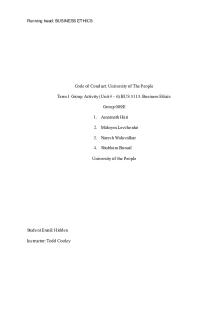
Group Project 009E Final
- 21 Pages

Group 4 Final Project
- 70 Pages

Group 05 Assignment Final Project
- 69 Pages

Group Think Project Final Answer
- 4 Pages

final group project report-4G (1).pdf
- 105 Pages
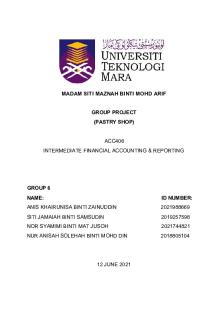
Group Project Account ( Group 6)
- 21 Pages
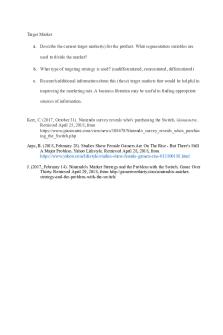
Group Project- Target Market
- 4 Pages
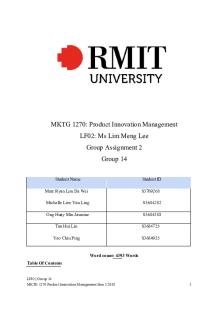
PIM Group Project 2
- 68 Pages
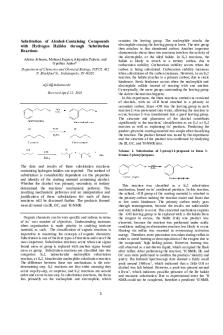
Group Project JOC Note
- 4 Pages

Group Project Proposal
- 1 Pages
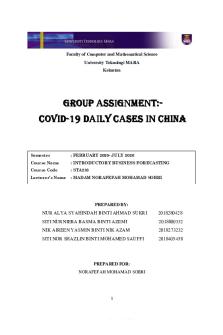
Group Project STA 233
- 33 Pages
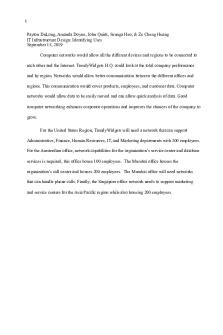
IST Group Project
- 19 Pages

Group project guidelines
- 1 Pages

group project sta108
- 55 Pages
Popular Institutions
- Tinajero National High School - Annex
- Politeknik Caltex Riau
- Yokohama City University
- SGT University
- University of Al-Qadisiyah
- Divine Word College of Vigan
- Techniek College Rotterdam
- Universidade de Santiago
- Universiti Teknologi MARA Cawangan Johor Kampus Pasir Gudang
- Poltekkes Kemenkes Yogyakarta
- Baguio City National High School
- Colegio san marcos
- preparatoria uno
- Centro de Bachillerato Tecnológico Industrial y de Servicios No. 107
- Dalian Maritime University
- Quang Trung Secondary School
- Colegio Tecnológico en Informática
- Corporación Regional de Educación Superior
- Grupo CEDVA
- Dar Al Uloom University
- Centro de Estudios Preuniversitarios de la Universidad Nacional de Ingeniería
- 上智大学
- Aakash International School, Nuna Majara
- San Felipe Neri Catholic School
- Kang Chiao International School - New Taipei City
- Misamis Occidental National High School
- Institución Educativa Escuela Normal Juan Ladrilleros
- Kolehiyo ng Pantukan
- Batanes State College
- Instituto Continental
- Sekolah Menengah Kejuruan Kesehatan Kaltara (Tarakan)
- Colegio de La Inmaculada Concepcion - Cebu
